Sediment Load Decreases After the Historical 2017 Megafire in Central Chile: The Purapel in Sauzal Experimental Watershed Case Study and Its Implications for Sustainable Watershed Management
Abstract
1. Introduction
2. Materials and Methods
2.1. Materials
2.1.1. Data
2.1.2. Study Area
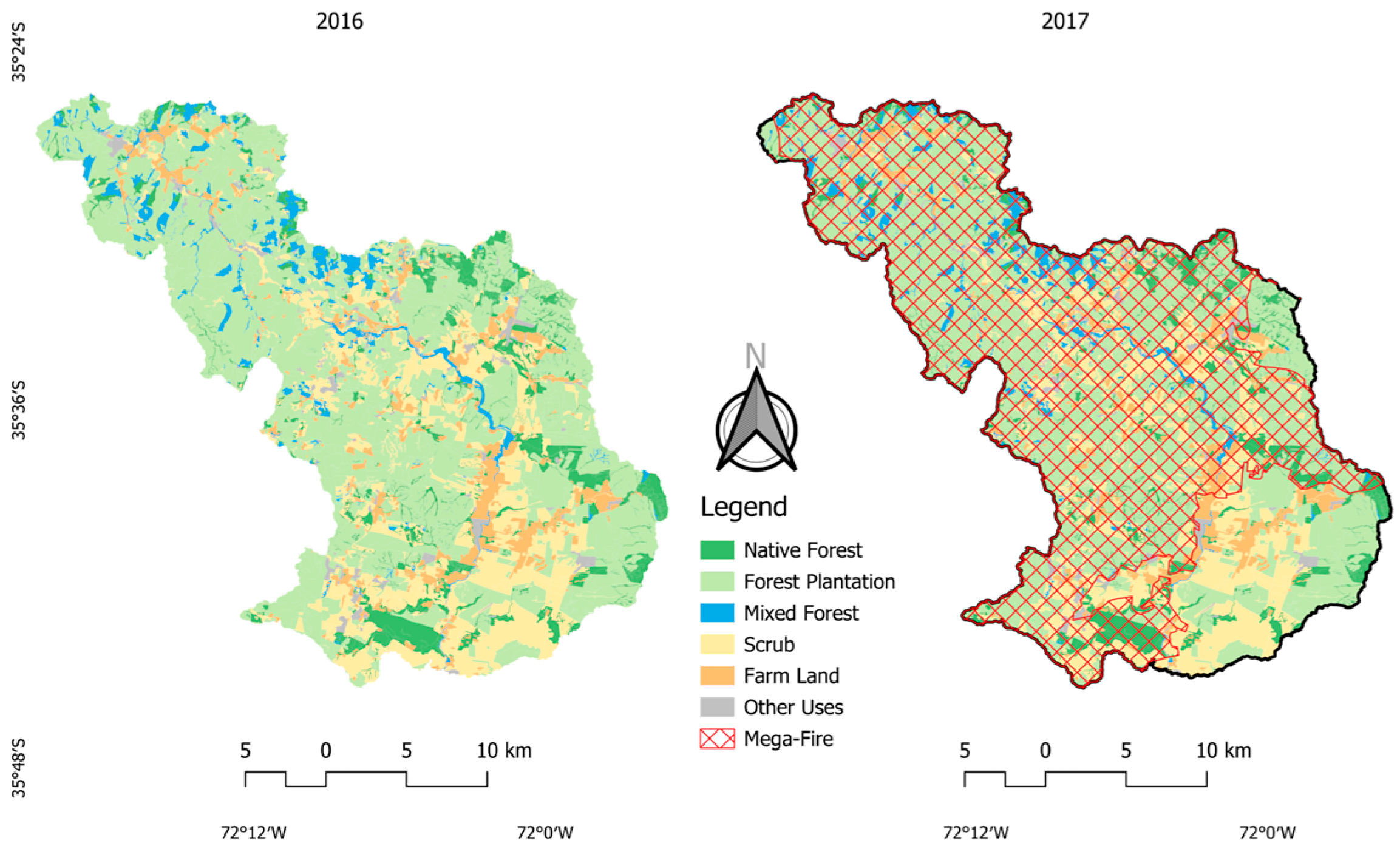
| Label | 2017 | 2018 |
|---|---|---|
| Unburned | 23,557 | 47,521 |
| Enhanced Regrowth, Low | 853 | 3150 |
| Enhanced Regrowth, High | 8 | 351 |
| Low Severity | 13,386 | 14,921 |
| Moderate-low Severity | 11,041 | 454 |
| Moderate-high Severity | 9547 | 16 |
| High Severity | 8021 | 1 |
2.2. Methods
2.2.1. Normalized Burn Ratio (NBR)
2.2.2. Watershed Characterization
- (a)
- Precipitation
- (b)
- Topography
2.2.3. Vegetation Cover
2.3. Statistical Analysis
3. Results
3.1. Analysis of Burned Areas
3.2. Precipitation and Streamflow Analysis
3.3. Hypsometric Curves
3.4. EVI Analysis
3.5. Descriptive Analysis of Sediment Load
3.6. C(Q) Model Fitting
3.7. Sediment Load Trends
4. Discussion
Management Implications
5. Conclusions and Recommendations
Author Contributions
Funding
Institutional Review Board Statement
Informed Consent Statement
Data Availability Statement
Acknowledgments
Conflicts of Interest
References
- Zheng, H.; Chen, F.; Ouyang, Z.; Tu, N.; Xu, W.; Wang, X.; Miao, H.; Li, X.; Tian, Y. Impacts of Reforestation Approaches on Runoff Control in the Hilly Red Soil Region of Southern China. J. Hydrol. 2008, 356, 174–184. [Google Scholar] [CrossRef]
- Yu, X.; Wang, H.; Xin, Z.; Lv, X. Effect of Forest on Sediment Yield in North China. Int. Soil Water Conserv. Res. 2013, 1, 58–64. [Google Scholar] [CrossRef]
- Quiñonero-Rubio, J.M.; Nadeu, E.; Boix-Fayos, C.; De Vente, J. Evaluation of the Effectiveness of Forest Restoration and Check-Dams to Reduce Catchment Sediment Yield. Land Degrad. Dev. 2016, 27, 1018–1031. [Google Scholar] [CrossRef]
- Pizarro, R.; Valdés-Pineda, R.; Garcia-Chevesich, P.A.; Ibáñez, A.; Pino, J.; Scott, D.F.; Neary, D.G.; McCray, J.E.; Castillo, M.; Ubilla, P. The Large-Scale Effect of Forest Cover on Long-Term Streamflow Variations in Mediterranean Catchments of Central Chile. Sustainability 2022, 14, 4443. [Google Scholar] [CrossRef]
- Zhang, L.; Wang, J.; Bai, Z.; Lv, C. Effects of Vegetation on Runoff and Soil Erosion on Reclaimed Land in an Opencast Coal-Mine Dump in a Loess Area. CATENA 2015, 128, 44–53. [Google Scholar] [CrossRef]
- Ferreira, P.; Van Soesbergen, A.; Mulligan, M.; Freitas, M.; Vale, M.M. Can Forests Buffer Negative Impacts of Land-Use and Climate Changes on Water Ecosystem Services? The Case of a Brazilian Megalopolis. Sci. Total Environ. 2019, 685, 248–258. [Google Scholar] [CrossRef]
- Li, G.; Wan, L.; Cui, M.; Wu, B.; Zhou, J. Influence of Canopy Interception and Rainfall Kinetic Energy on Soil Erosion under Forests. Forests 2019, 10, 509. [Google Scholar] [CrossRef]
- Zore, A.; Bezak, N.; Šraj, M. The Influence of Rainfall Interception on the Erosive Power of Raindrops under the Birch Tree. J. Hydrol. 2022, 613, 128478. [Google Scholar] [CrossRef]
- García-Chevesich, P. Control de la Erosión y Recuperación de Suelos Degradados; Outskirts Press: Parker, CO, USA, 2015; ISBN 978-1-4787-4510-5. [Google Scholar]
- Unesco. Antecedentes de La Relación Masa Forestal y Disponibilidad Hídrica En Chile; Documentos Técnicos PHI-VIII; Unesco: Montevideo, Uruguay, 2019. [Google Scholar]
- Sidle, R.C.; Ziegler, A.D. The Canopy Interception–Landslide Initiation Conundrum: Insight from a Tropical Secondary Forest in Northern Thailand. Hydrol. Earth Syst. Sci. 2017, 21, 651–667. [Google Scholar] [CrossRef]
- Tao, W.; Shao, F.; Su, L.; Wang, Q.; Zhou, B.; Sun, Y. An Analytical Model for Simulating the Rainfall-Interception-Infiltration-Runoff Process with Non-Uniform Rainfall. J. Environ. Manag. 2023, 344, 118490. [Google Scholar] [CrossRef]
- Tsiko, C.T.; Makurira, H.; Gerrits, A.M.J.; Savenije, H.H.G. Measuring Forest Floor and Canopy Interception in a Savannah Ecosystem. Phys. Chem. Earth Parts A/B/C 2012, 47–48, 122–127. [Google Scholar] [CrossRef]
- Berland, A.; Shiflett, S.A.; Shuster, W.D.; Garmestani, A.S.; Goddard, H.C.; Herrmann, D.L.; Hopton, M.E. The Role of Trees in Urban Stormwater Management. Landsc. Urban Plan. 2017, 162, 167–177. [Google Scholar] [CrossRef]
- Jones, J.; Ellison, D.; Ferraz, S.; Lara, A.; Wei, X.; Zhang, Z. Forest Restoration and Hydrology. For. Ecol. Manag. 2022, 520, 120342. [Google Scholar] [CrossRef]
- González, M.E.; Lara, A.; Urrutia, R.; Bosnich, J. Cambio Climático y Su Impacto Potencial En La Ocurrencia de Incendios Forestales En La Zona Centro-Sur de Chile (33°–42° S). Bosque 2011, 32, 215–219. [Google Scholar] [CrossRef]
- Abatzoglou, J.T.; Williams, A.P. Impact of Anthropogenic Climate Change on Wildfire across Western US Forests. Proc. Natl. Acad. Sci. USA 2016, 113, 11770–11775. [Google Scholar] [CrossRef] [PubMed]
- Abatzoglou, J.T.; Battisti, D.S.; Williams, A.P.; Hansen, W.D.; Harvey, B.J.; Kolden, C.A. Projected Increases in Western US Forest Fire despite Growing Fuel Constraints. Commun. Earth Environ. 2021, 2, 227. [Google Scholar] [CrossRef]
- Cordero, R.R.; Feron, S.; Damiani, A.; Carrasco, J.; Karas, C.; Wang, C.; Kraamwinkel, C.T.; Beaulieu, A. Extreme Fire Weather in Chile Driven by Climate Change and El Niño–Southern Oscillation (ENSO). Sci. Rep. 2024, 14, 1974. [Google Scholar] [CrossRef]
- Úbeda, X.; Sarricolea, P. Wildfires in Chile: A Review. Glob. Planet. Change 2016, 146, 152–161. [Google Scholar] [CrossRef]
- Castillo, M.; Plaza, Á.; Garfias, R. A Recent Review of Fire Behavior and Fire Effects on Native Vegetation in Central Chile. Glob. Ecol. Conserv. 2020, 24, e01210. [Google Scholar] [CrossRef]
- Klubock, T.M. La Frontera: Forests and Ecological Conflict in Chile’s Frontier Territory; Duke University Press: Durham, NC, USA, 2014; ISBN 978-0-8223-7656-9. [Google Scholar]
- Fuentealba, A.; Duran, L.; Morales, N.S. The Impact of Forest Science in Chile: History, Contribution, and Challenges. Can. J. For. Res. 2021, 51, 753–765. [Google Scholar] [CrossRef]
- Heilmayr, R.; Echeverría, C.; Fuentes, R.; Lambin, E.F. A Plantation-Dominated Forest Transition in Chile. Appl. Geogr. 2016, 75, 71–82. [Google Scholar] [CrossRef]
- Turner, M.G. Disturbance and Landscape Dynamics in a Changing World. Ecology 2010, 91, 2833–2849. [Google Scholar] [CrossRef]
- Leal-Medina, C.; Lopatin, J.; Contreras, A.; González, M.E.; Galleguillos, M. Post-Fire Pinus Radiata Invasion in a Threatened Biodiversity Hotspot Forest: A Multi-Scale Remote Sensing Assessment. For. Ecol. Manag. 2024, 561, 121861. [Google Scholar] [CrossRef]
- Depountis, N.; Michalopoulou, M.; Kavoura, K.; Nikolakopoulos, K.; Sabatakakis, N. Estimating Soil Erosion Rate Changes in Areas Affected by Wildfires. Int. J. Geo-Inf. 2020, 9, 562. [Google Scholar] [CrossRef]
- Thomas, G.; Rosalie, V.; Olivier, C.; Anna Maria, D.G.; Antonio, L.P. Modelling Forest Fire and Firebreak Scenarios in a Mediterranean Mountainous Catchment: Impacts on Sediment Loads. J. Environ. Manag. 2021, 289, 112497. [Google Scholar] [CrossRef]
- Robinne, F.; Hallema, D.W.; Bladon, K.D.; Flannigan, M.D.; Boisramé, G.; Bréthaut, C.M.; Doerr, S.H.; Di Baldassarre, G.; Gallagher, L.A.; Hohner, A.K.; et al. Scientists’ Warning on Extreme Wildfire Risks to Water Supply. Hydrol. Process. 2021, 35, e14086. [Google Scholar] [CrossRef]
- Mastrolonardo, G.; Castelli, G.; Certini, G.; Maxwald, M.; Trucchi, P.; Foderi, C.; Errico, A.; Marra, E.; Preti, F. Post-Fire Erosion and Sediment Yield in a Mediterranean Forest Catchment in Italy. Int. J. Sediment Res. 2024, 39, 464–477. [Google Scholar] [CrossRef]
- De Girolamo, A.M.; Cerdan, O.; Grangeon, T.; Ricci, G.F.; Vandromme, R.; Lo Porto, A. Modelling Effects of Forest Fire and Post-Fire Management in a Catchment Prone to Erosion: Impacts on Sediment Yield. CATENA 2022, 212, 106080. [Google Scholar] [CrossRef]
- East, A.E.; Logan, J.B.; Dow, H.W.; Smith, D.P.; Iampietro, P.; Warrick, J.A.; Lorenson, T.D.; Hallas, L.; Kozlowicz, B. Post-Fire Sediment Yield From a Central California Watershed: Field Measurements and Validation of the WEPP Model. Earth Space Sci. 2024, 11, e2024EA003575. [Google Scholar] [CrossRef]
- Shakesby, R.A.; Doerr, S.H.; Walsh, R.P.D. The Erosional Impact of Soil Hydrophobicity: Current Problems and Future Research Directions. J. Hydrol. 2000, 231–232, 178–191. [Google Scholar] [CrossRef]
- Agbeshie, A.A.; Abugre, S.; Atta-Darkwa, T.; Awuah, R. A Review of the Effects of Forest Fire on Soil Properties. J. For. Res. 2022, 33, 1419–1441. [Google Scholar] [CrossRef]
- Asselman, N.E.M. Fitting and Interpretation of Sediment Rating Curves. J. Hydrol. 2000, 234, 228–248. [Google Scholar] [CrossRef]
- Li, S.; Yu, X.; Li, Z.; Xu, X.; Ye, Z. Temporal Variations in the Parameters of Sediment Rating Curves in Karst Watersheds. J. Hydrol. 2022, 612, 128274. [Google Scholar] [CrossRef]
- Zhang, T.; Li, D.; East, A.E.; Kettner, A.J.; Best, J.; Ni, J.; Lu, X. Shifted Sediment-Transport Regimes by Climate Change and Amplified Hydrological Variability in Cryosphere-Fed Rivers. Sci. Adv. 2023, 9, eadi5019. [Google Scholar] [CrossRef]
- Morehead, M.D.; Syvitski, J.P.; Hutton, E.W.H.; Peckham, S.D. Modeling the Temporal Variability in the Flux of Sediment from Ungauged River Basins. Glob. Planet. Change 2003, 39, 95–110. [Google Scholar] [CrossRef]
- Yang, G.; Chen, Z.; Yu, F.; Wang, Z.; Zhao, Y.; Wang, Z. Sediment Rating Parameters and Their Implications: Yangtze River, China. Geomorphology 2007, 85, 166–175. [Google Scholar] [CrossRef]
- Wang, J.; Ishidaira, H.; Sun, W.; Ning, S. Development and Interpretation of New Sediment Rating Curve Considering the Effect of Vegetation Cover for Asian Basins. Sci. World J. 2013, 2013, 154375. [Google Scholar] [CrossRef] [PubMed]
- Sarricolea, P.; Herrera-Ossandon, M.; Meseguer-Ruiz, Ó. Climatic Regionalisation of Continental Chile. J. Maps 2017, 13, 66–73. [Google Scholar] [CrossRef]
- Galleguillos, M.; Dinamarca, D.; Seguel, O.; Faundez, C. CLSoilMaps: A National Soil Gridded Product for Chile [Data Set]. In Earth Science System Data (Versión V1). Zenodo. 2022. Available online: https://zenodo.org/records/7464210 (accessed on 27 March 2025). [CrossRef]
- Gibson, R.; Danaher, T.; Hehir, W.; Collins, L. A Remote Sensing Approach to Mapping Fire Severity in South-Eastern Australia Using Sentinel 2 and Random Forest. Remote Sens. Environ. 2020, 240, 111702. [Google Scholar] [CrossRef]
- Gale, M.G.; Cary, G.J.; Yebra, M.; Leavesley, A.J.; Van Dijk, A.I.J.M. Comparison of Contrasting Optical and LiDAR Fire Severity Remote Sensing Methods in a Heterogeneous Forested Landscape in South-Eastern Australia. Int. J. Remote Sens. 2022, 43, 2538–2559. [Google Scholar] [CrossRef]
- Faúndez Pinilla, J.; Castillo Soto, M.; Navarro Cerrillo, R.M. Impactos de Los Incendios Forestales de Magnitud En Áreas Silvestres Protegidas de Chile Central. Bosque 2023, 44, 83–95. [Google Scholar] [CrossRef]
- Zennir, R.; Khallef, B. Forest Fire Area Detection Using Sentinel-2 Data: Case of the Beni Salah National Forest—Algeria. J. For. Sci. 2023, 69, 33–40. [Google Scholar] [CrossRef]
- Pike, R.J.; Wilson, S.E. Elevation-Relief Ratio, Hypsometric Integral, and Geomorphic Area-Altitude Analysis. Geol. Soc. Am. Bull. 1971, 82, 1079. [Google Scholar] [CrossRef]
- Maliqi, E.; Kumar, N.; Latifi, L.; Singh, S. Soil Erosion Estimation Using an Empirical Model, Hypsometric Integral and Geo-Information Science—A Case Study. Ecol. Eng. Environ. Technol. 2023, 24, 62–72. [Google Scholar] [CrossRef]
- QGIS Development Team. QGIS Geographic Information System. 2024. Available online: https://www.qgis.org (accessed on 27 March 2025).
- R Core Team. R: A Language and Environment for Statistical Computing. 2024. Available online: https://www.R-project.org/ (accessed on 27 March 2025).
- Strahler, A.N. Hypsometric (Area-Altitude) Analysis of Erosional Topography. Geol. Soc. Am. Bull. 1952, 63, 1117. [Google Scholar] [CrossRef]
- Pedrera, A.; Pérez-Peña, J.V.; Galindo-Zaldívar, J.; Azañón, J.M.; Azor, A. Testing the Sensitivity of Geomorphic Indices in Areas of Low-Rate Active Folding (Eastern Betic Cordillera, Spain). Geomorphology 2009, 105, 218–231. [Google Scholar] [CrossRef]
- Kadlag, R.B.; Pawase, P.P.; Gatkal, N.R.; Khurdal, J.K.; Nalawade, S.M. Hypsometric Analysis of Watershed Using Geographical Information System. JART 2022, 47, 239–242. [Google Scholar] [CrossRef]
- Bari, E.; Nipa, N.J.; Roy, B. Association of Vegetation Indices with Atmospheric & Biological Factors Using MODIS Time Series Products. Environ. Chall. 2021, 5, 100376. [Google Scholar] [CrossRef]
- Gurung, R.B.; Breidt, F.J.; Dutin, A.; Ogle, S.M. Predicting Enhanced Vegetation Index (EVI) Curves for Ecosystem Modeling Applications. Remote Sens. Environ. 2009, 113, 2186–2193. [Google Scholar] [CrossRef]
- Gerard, F.F.; George, C.T.; Hayman, G.; Chavana-Bryant, C.; Weedon, G.P. Leaf Phenology Amplitude Derived from MODIS NDVI and EVI: Maps of Leaf Phenology Synchrony for Meso- and South America. Geosci. Data J. 2020, 7, 13–26. [Google Scholar] [CrossRef]
- De, A.; Sahani, N.; Datta, A.; Maitra, A. Spatiotemporal Analysis of Different Vegetation Indices and Relation to Meteorological Parameters over a Tropical Urban Location and Its Surroundings. ATM 2024, 38, 911–934. [Google Scholar] [CrossRef]
- Crespo-Antia, J.P.; Gazol, A.; Pizarro, M.; González De Andrés, E.; Valeriano, C.; Rubio Cuadrado, Á.; Linares, J.C.; Camarero, J.J. Matching Vegetation Indices and Tree Vigor in Pyrenean Silver Fir Stands. Remote Sens. 2024, 16, 4564. [Google Scholar] [CrossRef]
- Warrick, J.A. Trend Analyses with River Sediment Rating Curves. Hydrol. Process. 2015, 29, 936–949. [Google Scholar] [CrossRef]
- Virtanen, P.; Gommers, R.; Oliphant, T.E.; Haberland, M.; Reddy, T.; Cournapeau, D.; Burovski, E.; Peterson, P.; Weckesser, W.; Bright, J.; et al. SciPy 1.0: Fundamental Algorithms for Scientific Computing in Python. Nat. Methods 2020, 17, 261–272. [Google Scholar] [CrossRef]
- Mann, H.B. Nonparametric Tests Against Trend. Econometrica 1945, 13, 245. [Google Scholar] [CrossRef]
- Yue, S.; Pilon, P.; Cavadias, G. Power of the Mann–Kendall and Spearman’s Rho Tests for Detecting Monotonic Trends in Hydrological Series. J. Hydrol. 2002, 259, 254–271. [Google Scholar] [CrossRef]
- Sangüesa, C.; Pizarro, R.; Ibañez, A.; Pino, J.; Rivera, D.; García-Chevesich, P.; Ingram, B. Spatial and Temporal Analysis of Rainfall Concentration Using the Gini Index and PCI. Water 2018, 10, 112. [Google Scholar] [CrossRef]
- Sangüesa, C.; Pizarro, R.; Ingram, B.; Balocchi, F.; García-Chevesich, P.; Pino, J.; Ibáñez, A.; Vallejos, C.; Mendoza, R.; Bernal, A.; et al. Streamflow Trends in Central Chile. Hydrology 2023, 10, 144. [Google Scholar] [CrossRef]
- Yu, G.; Wright, D.B.; Zhu, Z.; Smith, C.; Holman, K.D. Process-Based Flood Frequency Analysis in an Agricultural Watershed Exhibiting Nonstationary Flood Seasonality. Hydrol. Earth Syst. Sci. 2019, 23, 2225–2243. [Google Scholar] [CrossRef]
- Rodgers, K.; Roland, V.; Hoos, A.; Crowley-Ornelas, E.; Knight, R. An Analysis of Streamflow Trends in the Southern and Southeastern US from 1950–2015. Water 2020, 12, 3345. [Google Scholar] [CrossRef]
- Seabold, S.; Perktold, J. Statsmodels: Econometric and Statistical Modeling with Python. In Proceedings of the 9th Python in Science Conference, Austin, TX, USA, 28 June–3 July 2010; pp. 57–61. [Google Scholar] [CrossRef]
- Alvarez-Garreton, C.; Mendoza, P.A.; Boisier, J.P.; Addor, N.; Galleguillos, M.; Zambrano-Bigiarini, M.; Lara, A.; Puelma, C.; Cortes, G.; Garreaud, R.; et al. The CAMELS-CL Dataset: Catchment Attributes and Meteorology for Large Sample Studies—Chile Dataset. Hydrol. Earth Syst. Sci. 2018, 22, 5817–5846. [Google Scholar] [CrossRef]
- Pizarro, R.; García-Chevesich, P.; Pino, J.; Ibáñez, A.; Pérez, F.; Flores, J.P.; Sharp, J.O.; Ingram, B.; Mendoza, R.; Neary, D.G.; et al. Stabilization of Stage–Discharge Curves Following the Establishment of Forest Plantations: Implications for Sediment Production. River Res. Appl. 2020, 36, 1828–1837. [Google Scholar] [CrossRef]
- Buendia, C.; Bussi, G.; Tuset, J.; Vericat, D.; Sabater, S.; Palau, A.; Batalla, R.J. Effects of Afforestation on Runoff and Sediment Load in an Upland Mediterranean Catchment. Sci. Total Environ. 2016, 540, 144–157. [Google Scholar] [CrossRef] [PubMed]
- López-Vicente, M.; Nadal-Romero, E.; Cammeraat, E.L.H. Hydrological Connectivity Does Change Over 70 Years of Abandonment and Afforestation in the Spanish Pyrenees. Land Degrad. Dev. 2017, 28, 1298–1310. [Google Scholar] [CrossRef]
- Nadal-Romero, E.; Llena, M.; Cortijos-López, M.; Lasanta, T. Afforestation after Land Abandonment as a Nature-Based Solution in Mediterranean Mid-Mountain Areas: Implications and Research Gaps. Curr. Opin. Environ. Sci. Health 2023, 34, 100481. [Google Scholar] [CrossRef]
- Garreaud, R.D.; Boisier, J.P.; Rondanelli, R.; Montecinos, A.; Sepúlveda, H.H.; Veloso-Aguila, D. The Central Chile Mega Drought (2010–2018): A Climate Dynamics Perspective. Int. J. Clim. 2020, 40, 421–439. [Google Scholar] [CrossRef]
- Álamos, N.; Alvarez-Garreton, C.; Muñoz, A.; González-Reyes, Á. The Influence of Human Activities on Streamflow Reductions during the Megadrought in Central Chile. Hydrol. Earth Syst. Sci. 2024, 28, 2483–2503. [Google Scholar] [CrossRef]
- Garreaud, R.D.; Alvarez-Garreton, C.; Barichivich, J.; Boisier, J.P.; Christie, D.; Galleguillos, M.; LeQuesne, C.; McPhee, J.; Zambrano-Bigiarini, M. The 2010–2015 Megadrought in Central Chile: Impacts on Regional Hydroclimate and Vegetation. Hydrol. Earth Syst. Sci. 2017, 21, 6307–6327. [Google Scholar] [CrossRef]
- Farhan, Y.; Elgaziri, A.; Elmaji, I.; Ali, I. Hypsometric Analysis of Wadi Mujib-Wala Watershed (Southern Jordan) Using Remote Sensing and GIS Techniques. Int. J. Geo-Inf. 2016, 7, 158–176. [Google Scholar] [CrossRef]
- Méndez-Gutiérrez, A.G.; Corral-Rivas, S.; Nájera-Luna, J.A.; Cruz-Cobos, F.; Pompa-García, M. Análisis Morfométrico de La Cuenca El Salto, Durango, México. Terra 2021, 39, e64. [Google Scholar] [CrossRef]
- Vaezi, A.R.; Hasanzadeh, H.; Cerdà, A. Developing an Erodibility Triangle for Soil Textures in Semi-Arid Regions, NW Iran. CATENA 2016, 142, 221–232. [Google Scholar] [CrossRef]
- Baruah, S.; Kumaraperumal, R.; Kannan, B.; Ragunath, K.; Backiyavathy, M. Soil Erodibility Estimation and Its Correlation with Soil Properties in Coimbatore District. Int. J. Chem. Stud. 2019, 7, 3327–3332. [Google Scholar]
- González, M.E.; Galleguillos, M.; Lopatin, J.; Leal, C.; Becerra-Rodas, C.; Lara, A.; San Martín, J. Surviving in a Hostile Landscape: Nothofagus Alessandrii Remnant Forests Threatened by Mega-Fires and Exotic Pine Invasion in the Coastal Range of Central Chile. Oryx 2023, 57, 228–238. [Google Scholar] [CrossRef]
- Depountis, N.; Vidali, M.; Kavoura, K.; Nikolaos, S. Soil Erosion Prediction at the Water Reservoir’s Basin of Pineios Dam, Western Greece, Using the Revised Universal Soil Loss Equation. Wseas Trans. Environ. Dev. 2018, 14, 457–463. [Google Scholar]
- Gómez, P.; Hahn, S. Post-Fire Regeneration of Woody Species in Pinus radiata D. Don Plantations, Coastal Zone, Maule Region, Central Chile. Gayana Botánica 2017, 74, 302–306. [Google Scholar] [CrossRef]
- Becerra, P.I.; Figueroa, C.; Meza, A. Dinámica Post-Incendio de La Vegetación En La Localidad de Rastrojos, Chile Central. Gayana Bot. 2022, 79, 10–26. [Google Scholar] [CrossRef]
- Follmi, D.; Baartman, J.; Benali, A.; Nunes, J.P. How Do Large Wildfires Impact Sediment Redistribution over Multiple Decades? Earth Surf. Process. Landf. 2022, 47, 3033–3050. [Google Scholar] [CrossRef]
- Rodrigues, A.R.; Marques, S.; Botequim, B.; Marto, M.; Borges, J.G. Forest Management for Optimizing Soil Protection: A Landscape-Level Approach. For. Ecosyst. 2021, 8, 50. [Google Scholar] [CrossRef]
- Marziliano, P.A.; Bagnato, S.; Emo, E.; Mercuri, M. Post-Fire Natural Regeneration and Soil Response in Aleppo Pine Forests in a Mediterranean Environment. Sustainability 2025, 17, 8309. [Google Scholar] [CrossRef]
- Pizarro, R.; García-Chevesich, P.; Ingram, B.; Sangüesa, C.; Pino, J.; Ibáñez, A.; Mendoza, R.; Vallejos, C.; Pérez, F.; Flores, J.P.; et al. Establishment of Monterrey Pine (Pinus radiata) Plantations and Their Effects on Seasonal Sediment Yield in Central Chile. Sustainability 2023, 15, 6052. [Google Scholar] [CrossRef]
- East, A.E.; Logan, J.B.; Dartnell, P.; Lieber-Kotz, O.; Cavagnaro, D.B.; McCoy, S.W.; Lindsay, D.N. Watershed Sediment Yield Following the 2018 Carr Fire, Whiskeytown National Recreation Area, Northern California. Earth Space Sci. 2021, 8, e2021EA001828. [Google Scholar] [CrossRef]
- East, A.E.; Logan, J.B.; Dartnell, P.; Dow, H.W.; Lindsay, D.N.; Cavagnaro, D.B. Post-Fire Sediment Yield From a Western Sierra Nevada Watershed Burned by the 2021 Caldor Fire. Earth Space Sci. 2025, 12, e2024EA003939. [Google Scholar] [CrossRef]
- Cannon, S.H.; Kirkham, R.M.; Parise, M. Wildfire-Related Debris-Flow Generation on Storm King Mountain, Colorado. Environ. Eng. Geosci. 1993, 29, 25–36. [Google Scholar]
- Robichaud, P.R.; Ashmun, L.E.; Sims, B.D. Post-Fire Treatment Effectiveness for Hillslope Stabilization. Int. J. Wildland Fire 2016, 25, 485–494. [Google Scholar]
- Benda, L.; Miller, D.; Dunne, T.; Reeves, G.; Agee, J.; Michael, G. Interactions between Fire and Aquatic Ecosystems. Fisheries 2003, 28, 6–21. [Google Scholar]
- Shakesby, R.; Doerr, S. Wildfire as a Hydrological and Geomorphological Agent. Earth-Sci. Rev. 2006, 74, 269–307. [Google Scholar] [CrossRef]
- Tolorza, V.; Mohr, C.H.; Zambrano-Bigiarini, M.; Sotomayor, B.; Poblete-Caballero, D.; Carretier, S.; Galleguillos, M.; Seguel, O. Exotic Tree Plantations in the Chilean Coastal Range: Balancing the Effects of Discrete Disturbances, Connectivity, and a Persistent Drought on Catchment Erosion. Earth Surf. Dynam. 2024, 12, 841–861. [Google Scholar] [CrossRef]
- Rengers, F.K.; Tucker, G.E.; Moody, J.A.; Ebel, B.A. Illuminating Wildfire Erosion and Deposition Patterns with Repeat Terrestrial Lidar. J. Geophys. Res. Earth Surf. 2016, 121, 588–608. [Google Scholar] [CrossRef]
- Guilinger, J.J.; Foufoula-Georgiou, E.; Gray, A.B.; Randerson, J.T.; Smyth, P.; Barth, N.C.; Goulden, M.L. Predicting Postfire Sediment Yields of Small Steep Catchments Using Airborne Lidar Differencing. Geophys. Res. Lett. 2023, 50, e2023GL104626. [Google Scholar] [CrossRef]
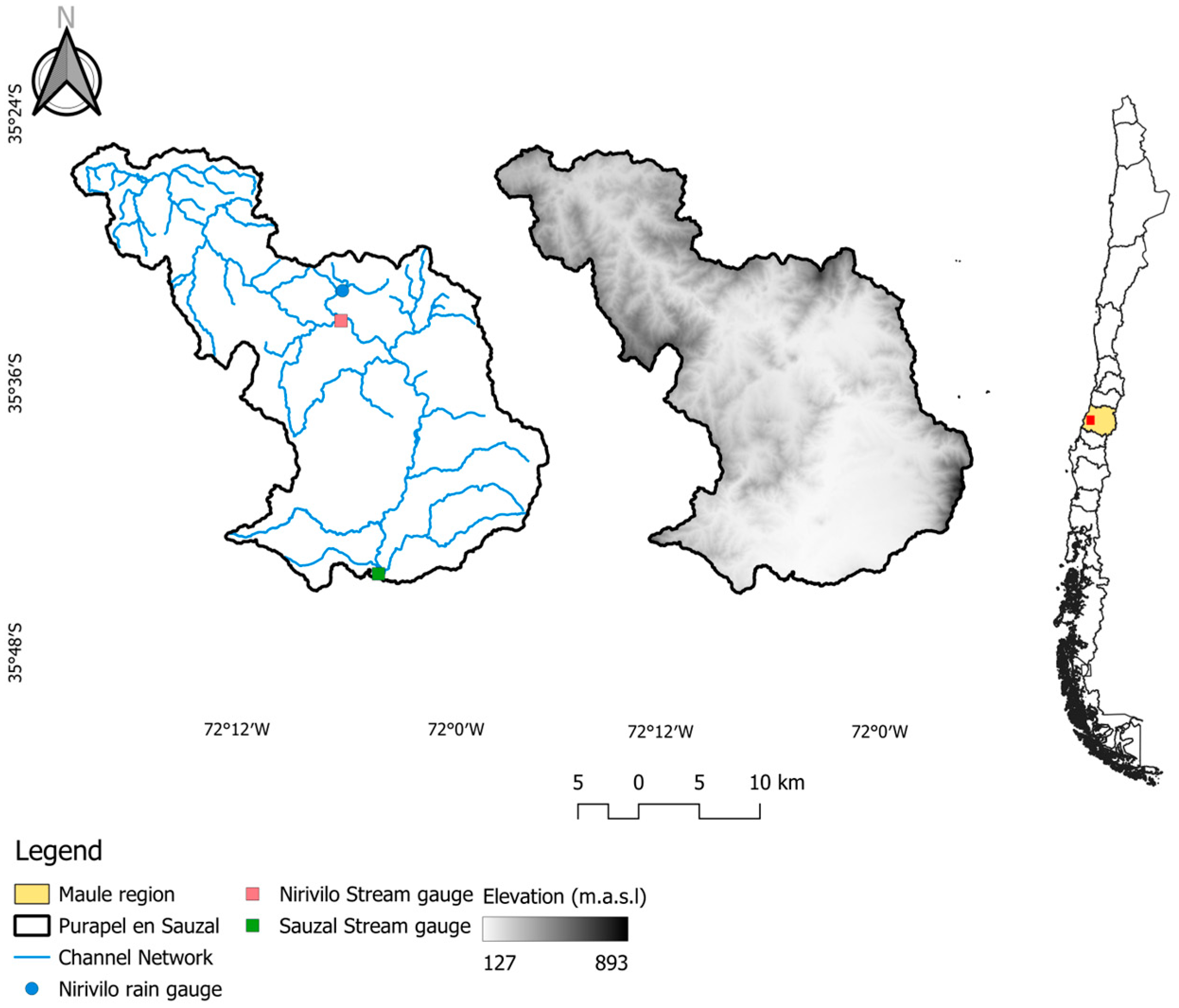

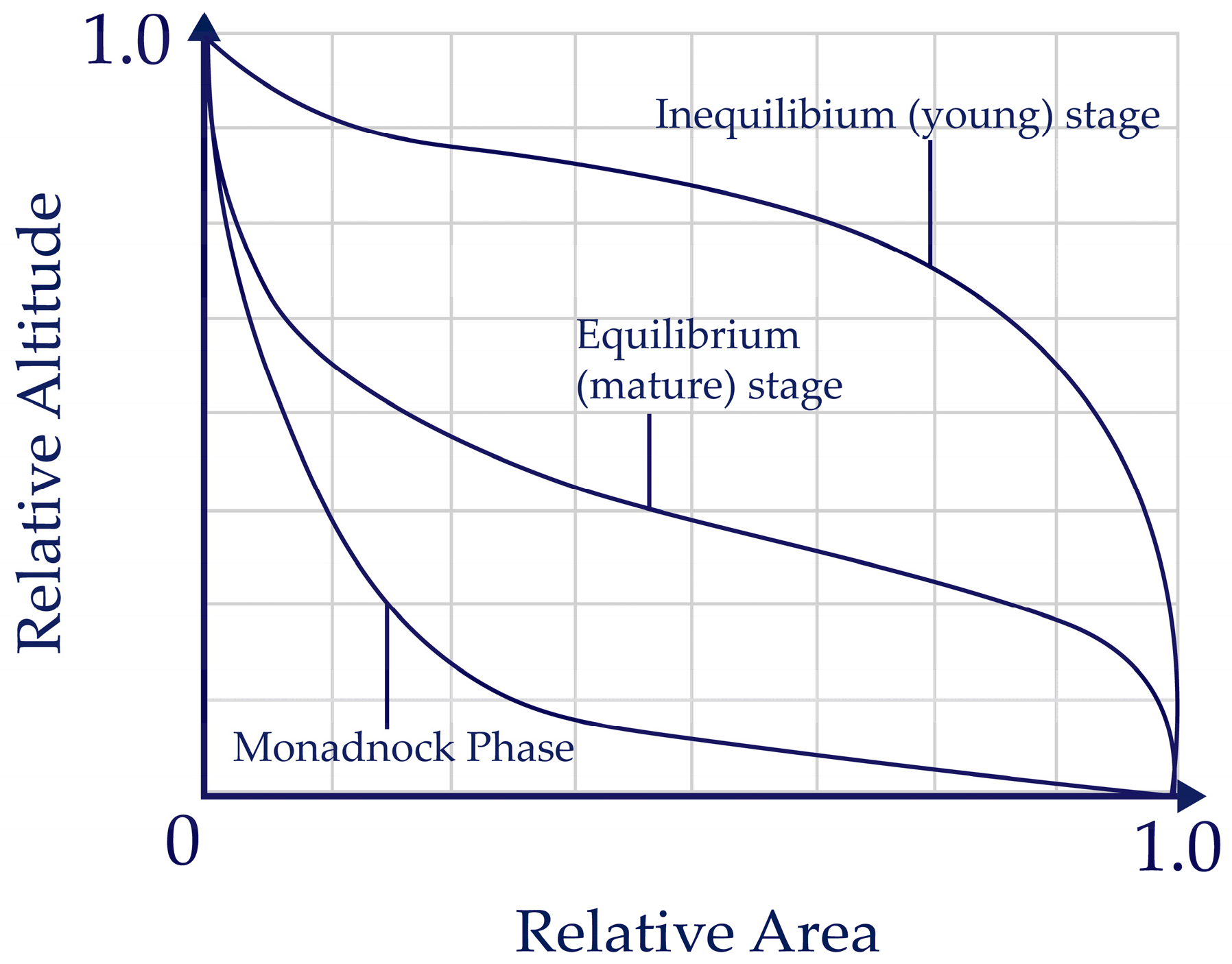

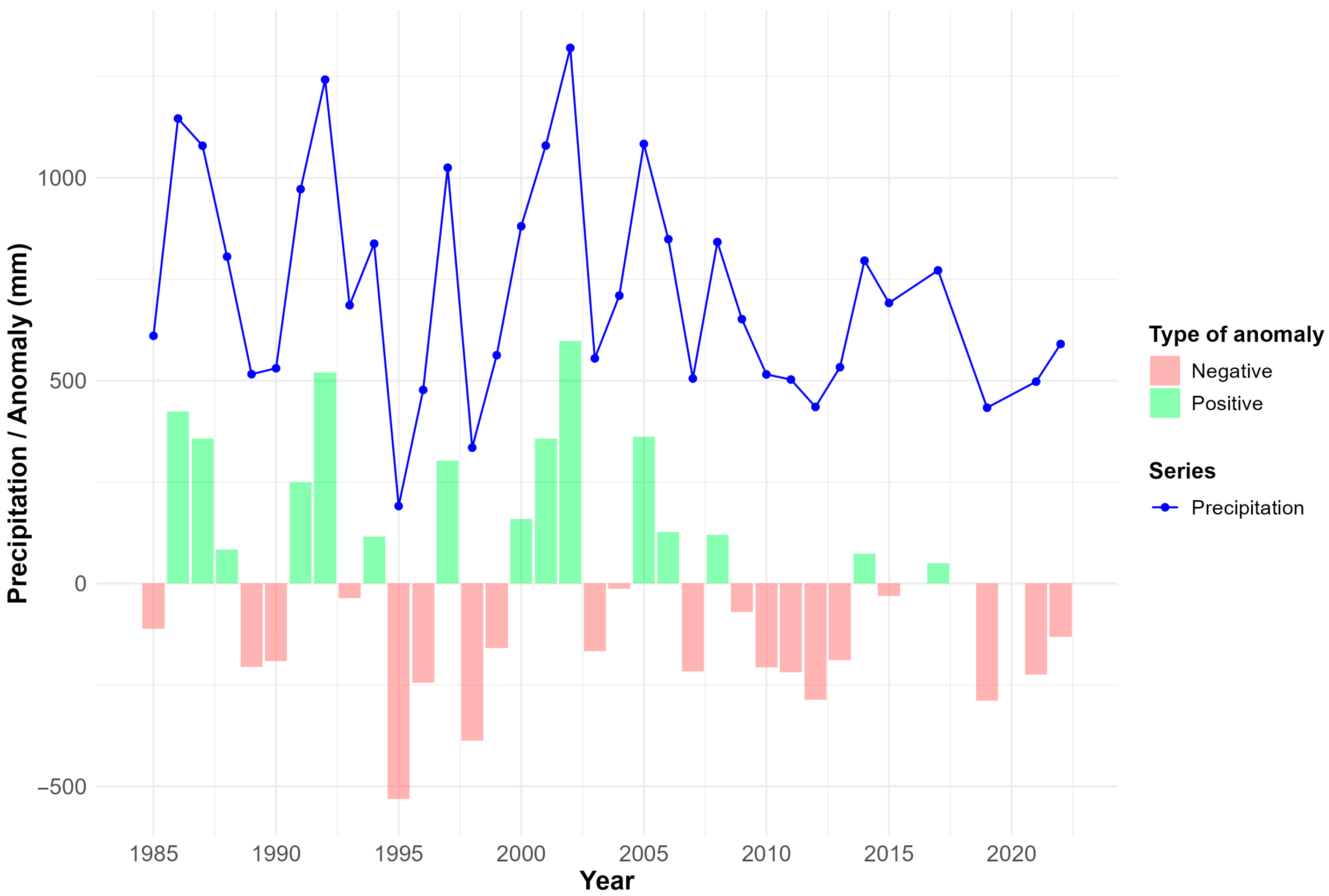

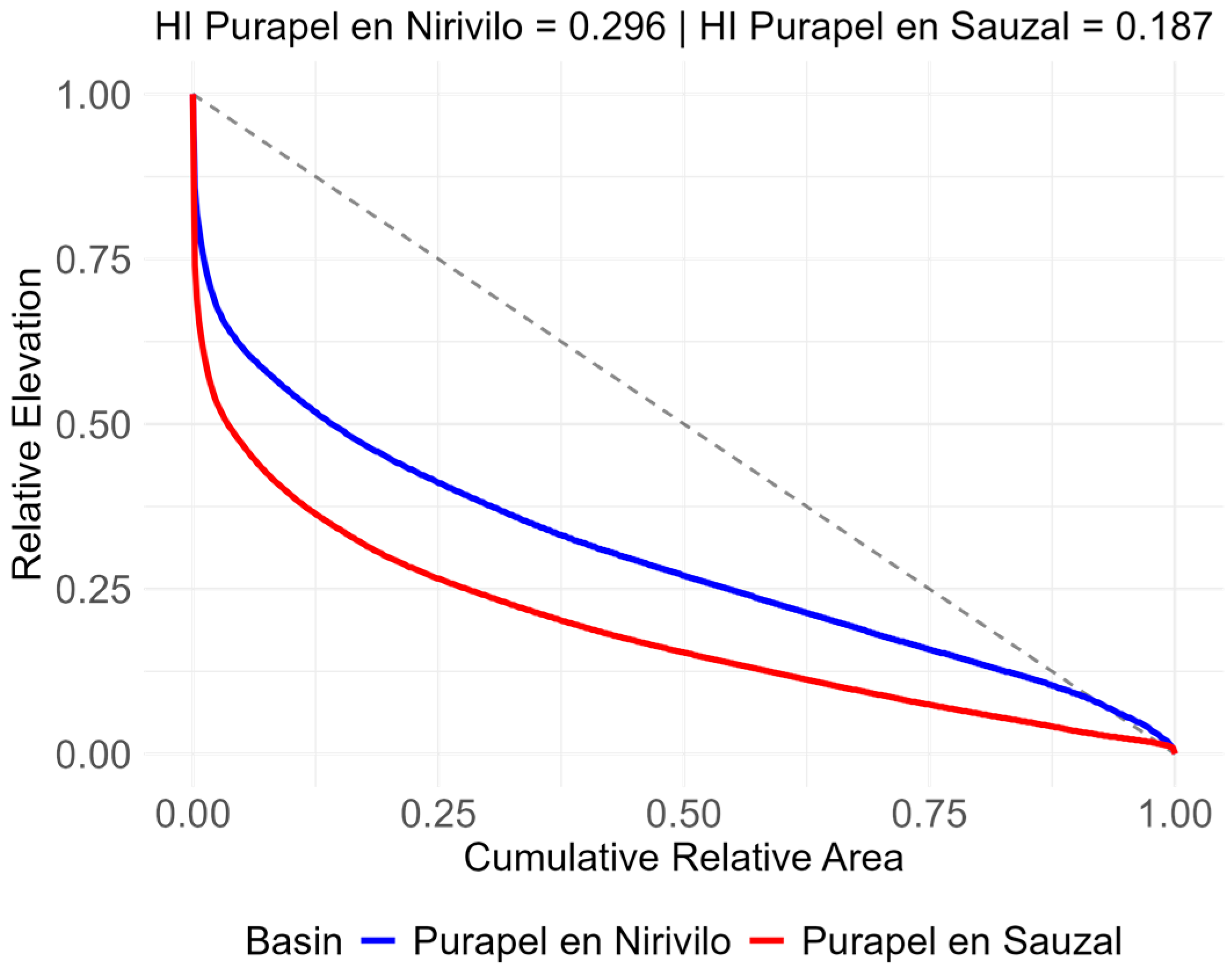
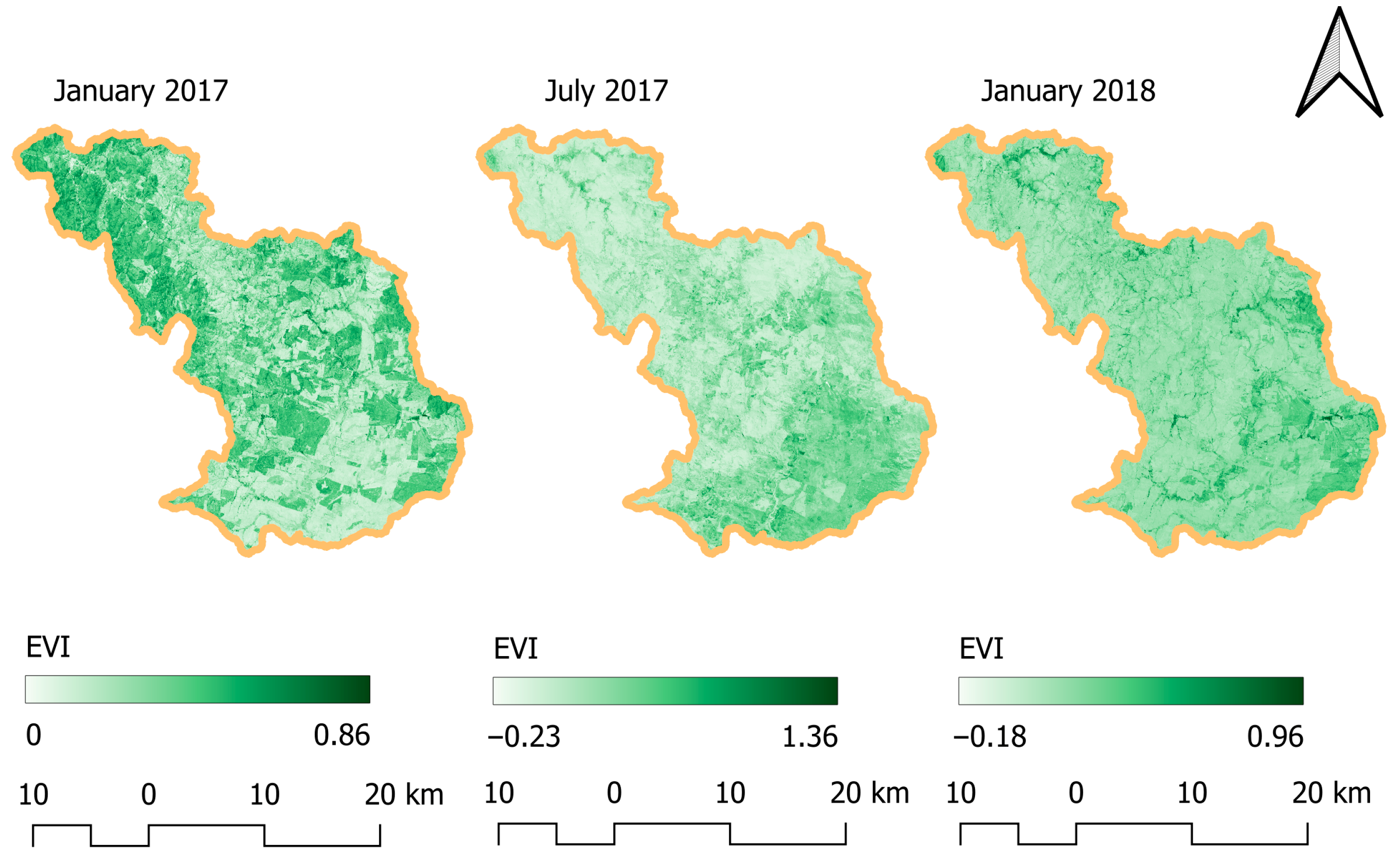




| Season | Coefficient | Z | Sen Slope | p-Value |
|---|---|---|---|---|
| Dry | b0 | −1.265 | −0.043 | 0.206 |
| b1 | −0.876 | −0.006 | 0.381 | |
| Wet | b0 | −3.153 | −0.450 | 0.002 |
| b1 | −2.125 | −0.012 | 0.034 |
Disclaimer/Publisher’s Note: The statements, opinions and data contained in all publications are solely those of the individual author(s) and contributor(s) and not of MDPI and/or the editor(s). MDPI and/or the editor(s) disclaim responsibility for any injury to people or property resulting from any ideas, methods, instructions or products referred to in the content. |
© 2025 by the authors. Licensee MDPI, Basel, Switzerland. This article is an open access article distributed under the terms and conditions of the Creative Commons Attribution (CC BY) license (https://creativecommons.org/licenses/by/4.0/).
Share and Cite
Pizarro, R.; Ingram, B.; Ibáñez, A.; Sangüesa, C.; Toledo, C.; Pino, J.; Uribe, C.; Gonzales, E.; Bustamante-Ortega, R.; Garcia-Chevesich, P.A. Sediment Load Decreases After the Historical 2017 Megafire in Central Chile: The Purapel in Sauzal Experimental Watershed Case Study and Its Implications for Sustainable Watershed Management. Sustainability 2025, 17, 9930. https://doi.org/10.3390/su17229930
Pizarro R, Ingram B, Ibáñez A, Sangüesa C, Toledo C, Pino J, Uribe C, Gonzales E, Bustamante-Ortega R, Garcia-Chevesich PA. Sediment Load Decreases After the Historical 2017 Megafire in Central Chile: The Purapel in Sauzal Experimental Watershed Case Study and Its Implications for Sustainable Watershed Management. Sustainability. 2025; 17(22):9930. https://doi.org/10.3390/su17229930
Chicago/Turabian StylePizarro, Roberto, Ben Ingram, Alfredo Ibáñez, Claudia Sangüesa, Cristóbal Toledo, Juan Pino, Camila Uribe, Edgard Gonzales, Ramón Bustamante-Ortega, and Pablo A. Garcia-Chevesich. 2025. "Sediment Load Decreases After the Historical 2017 Megafire in Central Chile: The Purapel in Sauzal Experimental Watershed Case Study and Its Implications for Sustainable Watershed Management" Sustainability 17, no. 22: 9930. https://doi.org/10.3390/su17229930
APA StylePizarro, R., Ingram, B., Ibáñez, A., Sangüesa, C., Toledo, C., Pino, J., Uribe, C., Gonzales, E., Bustamante-Ortega, R., & Garcia-Chevesich, P. A. (2025). Sediment Load Decreases After the Historical 2017 Megafire in Central Chile: The Purapel in Sauzal Experimental Watershed Case Study and Its Implications for Sustainable Watershed Management. Sustainability, 17(22), 9930. https://doi.org/10.3390/su17229930









